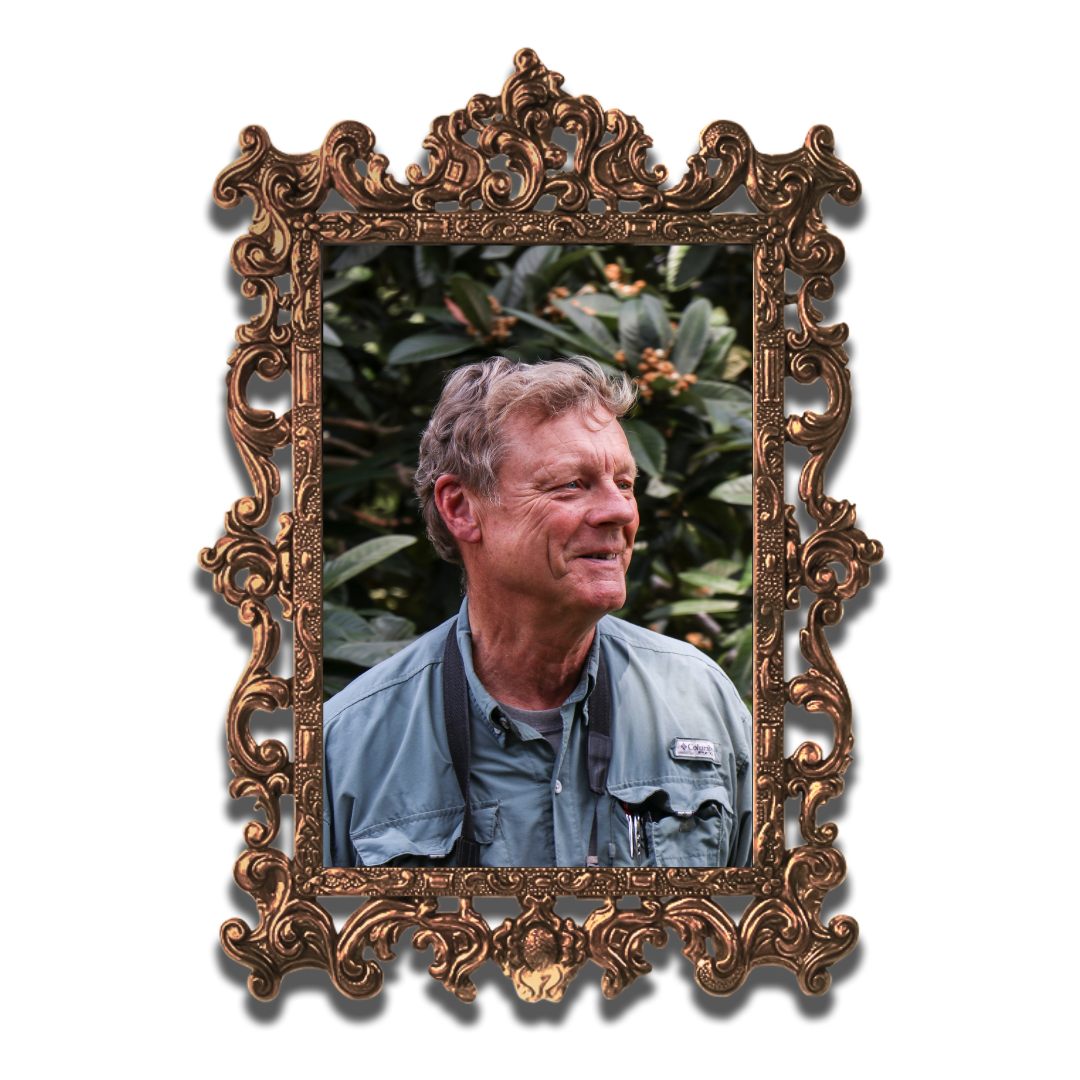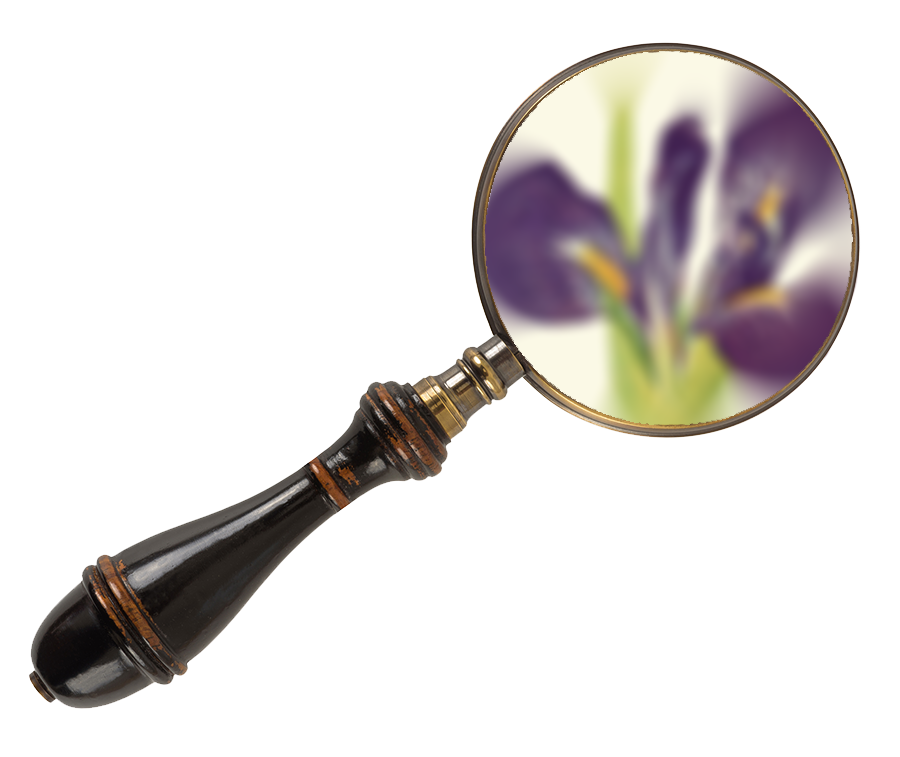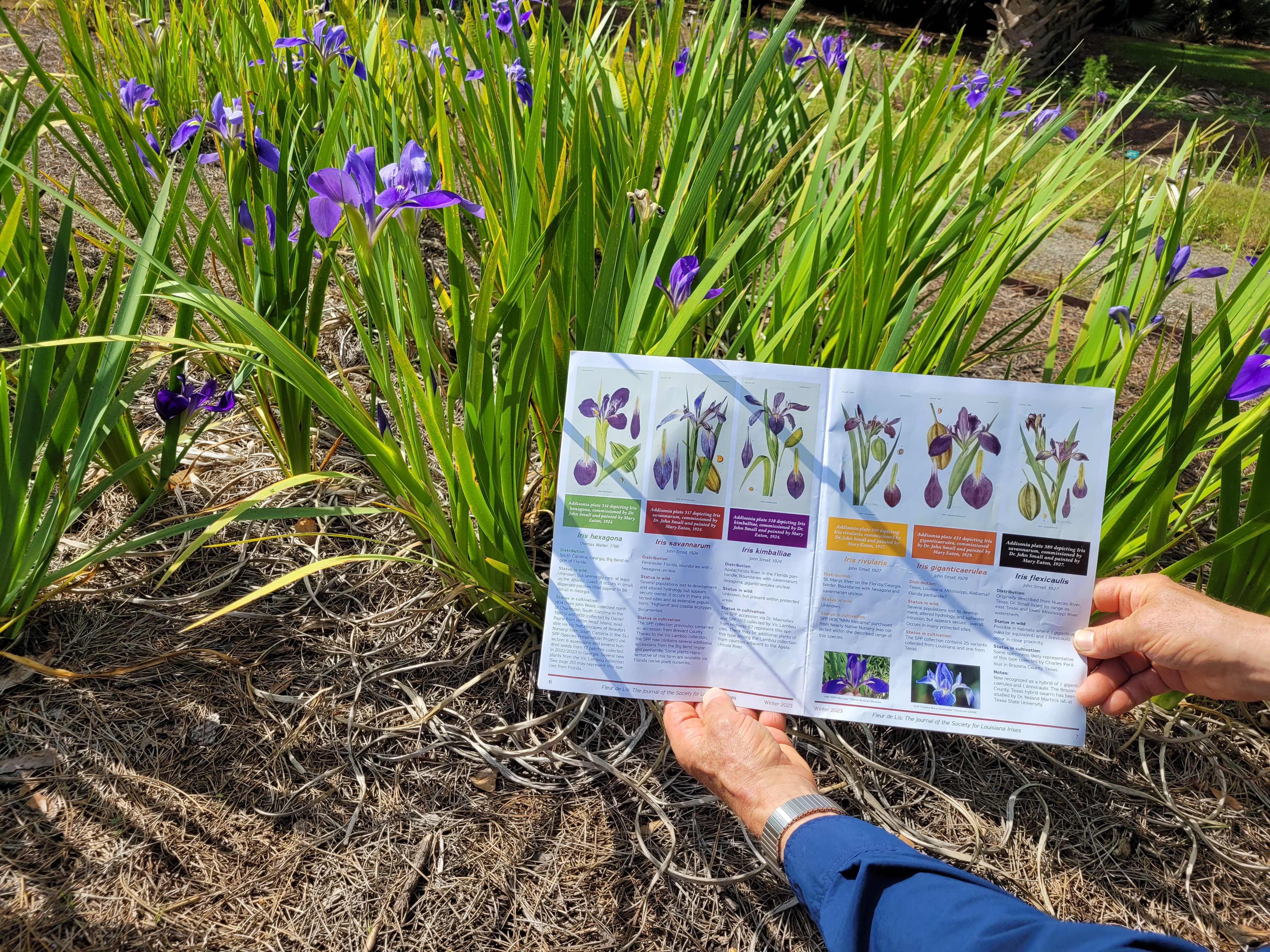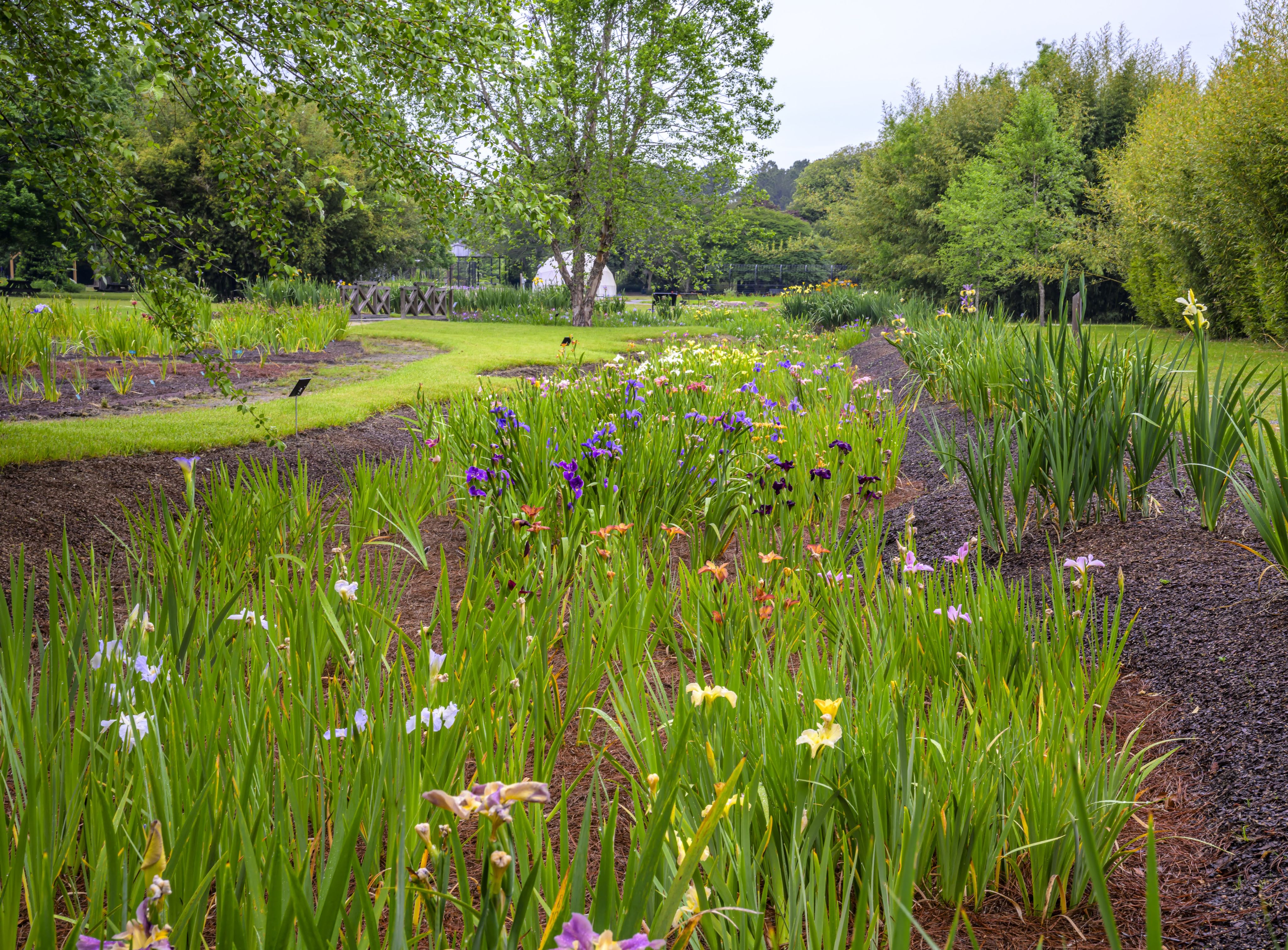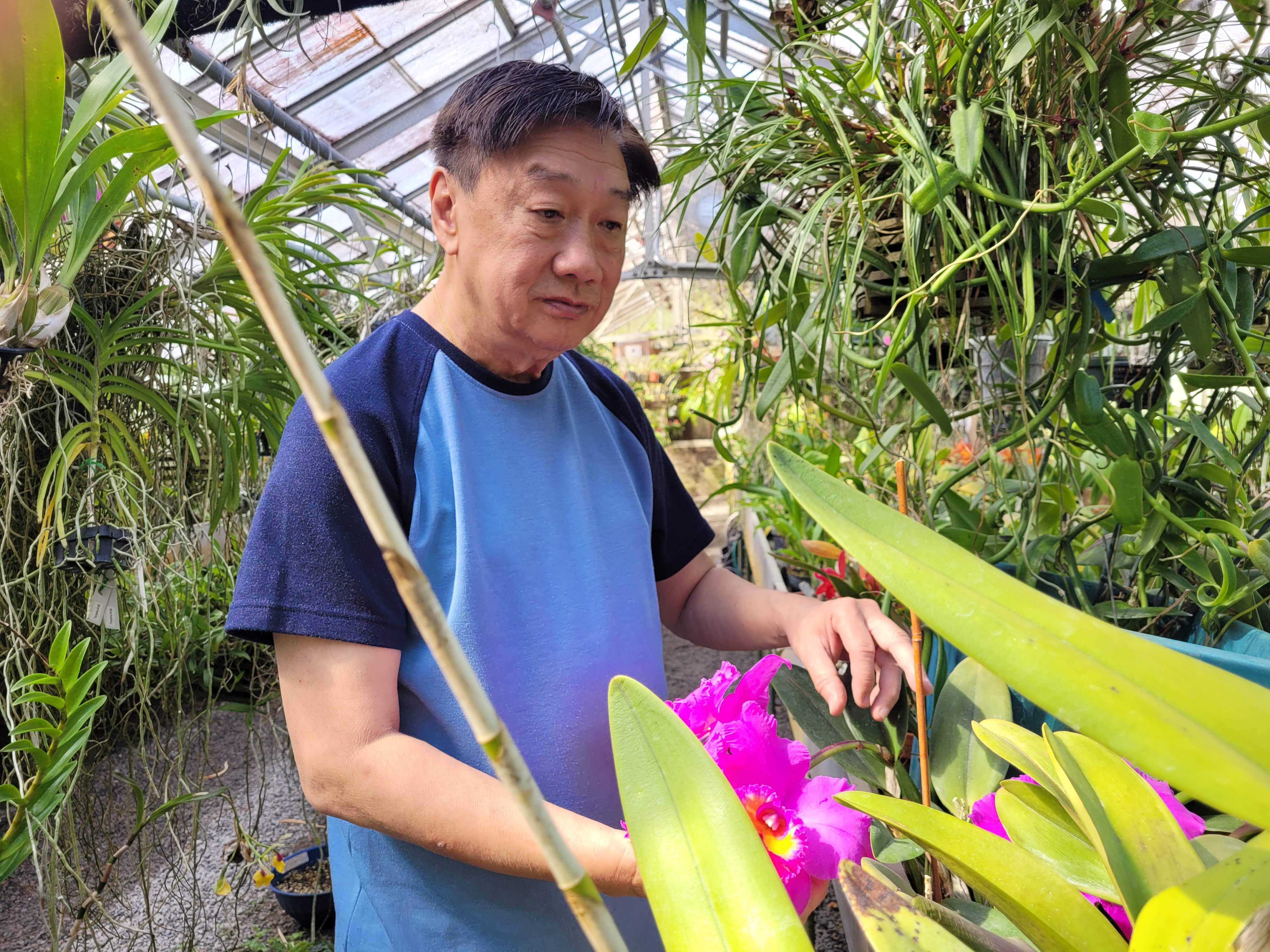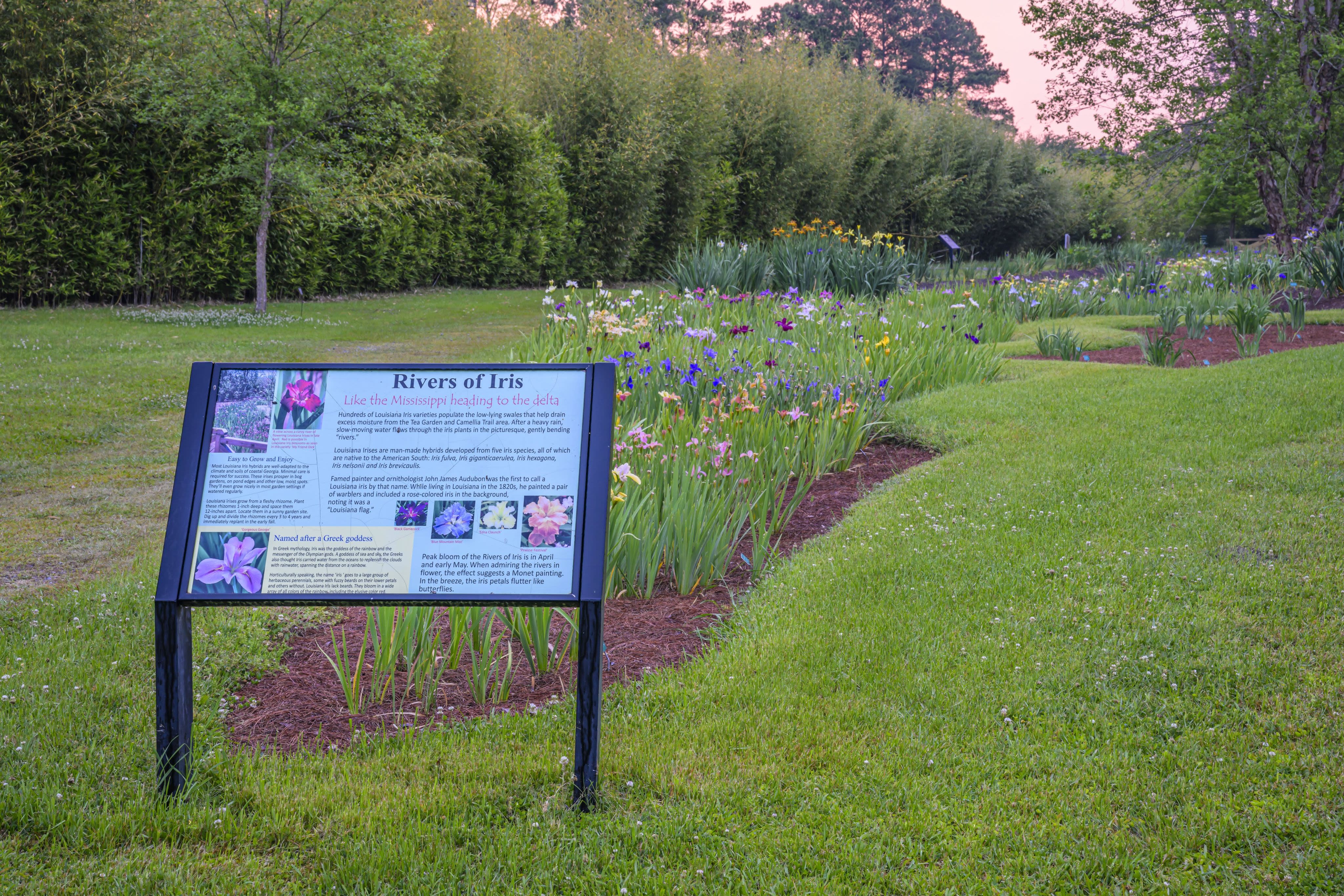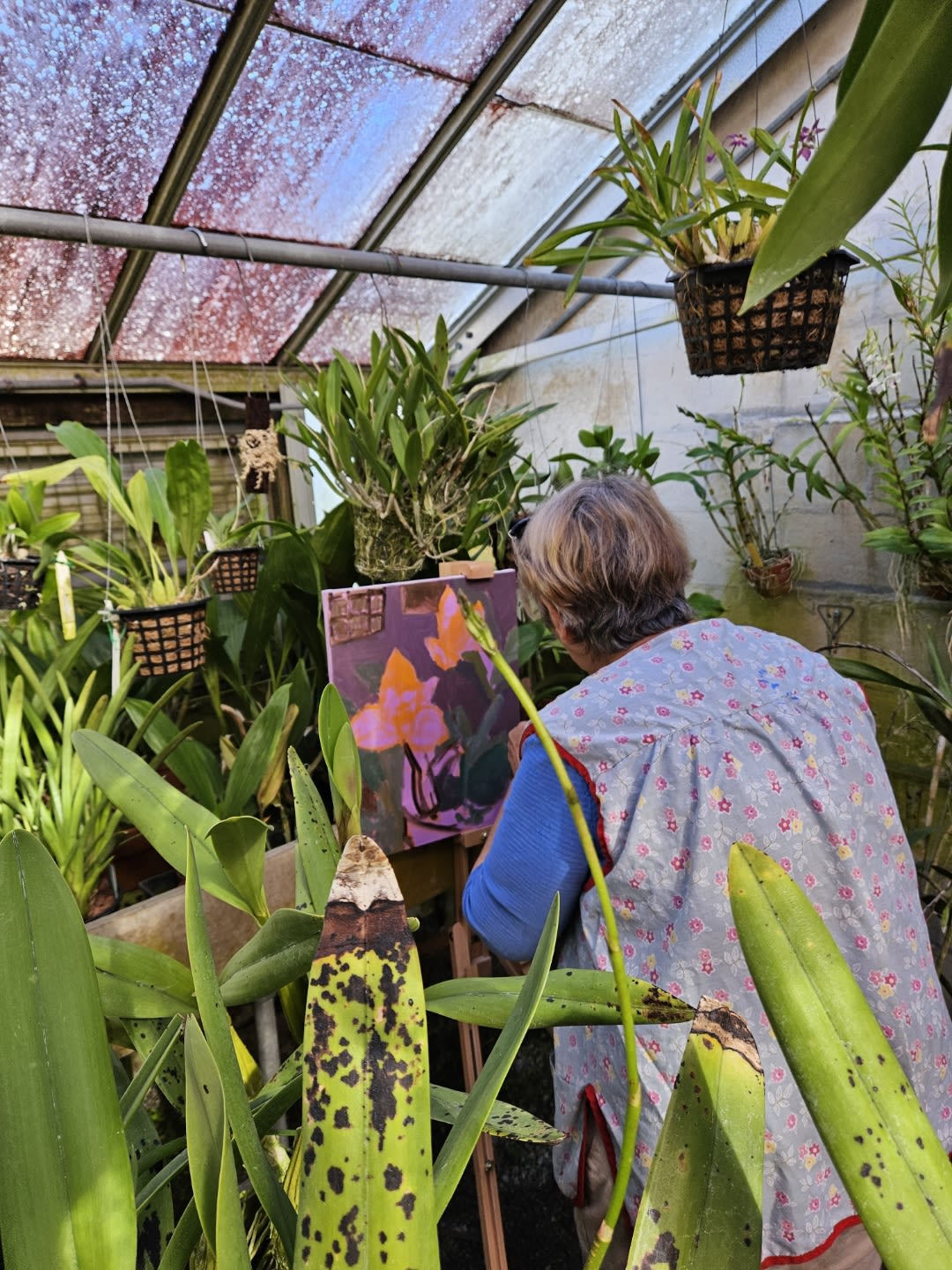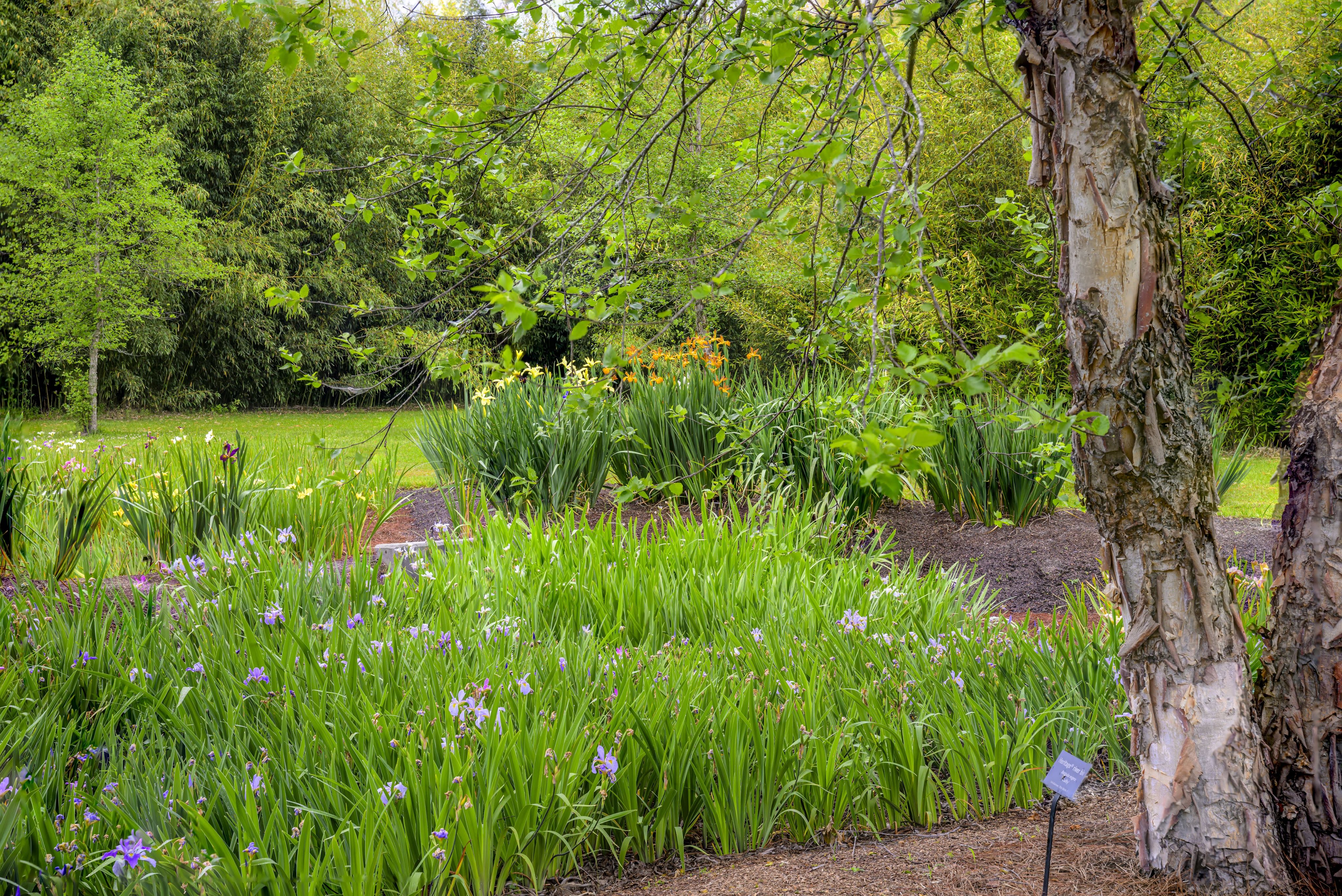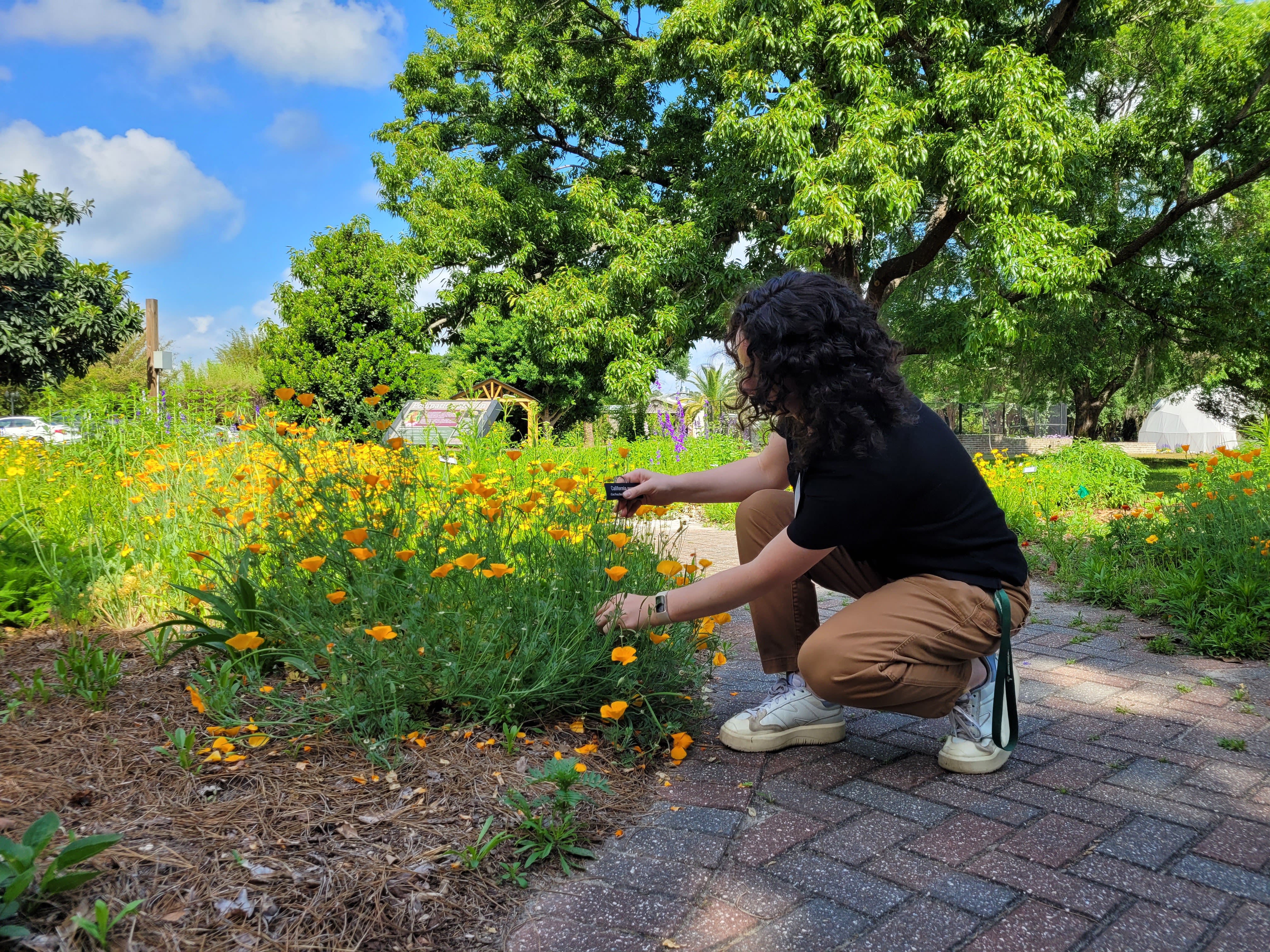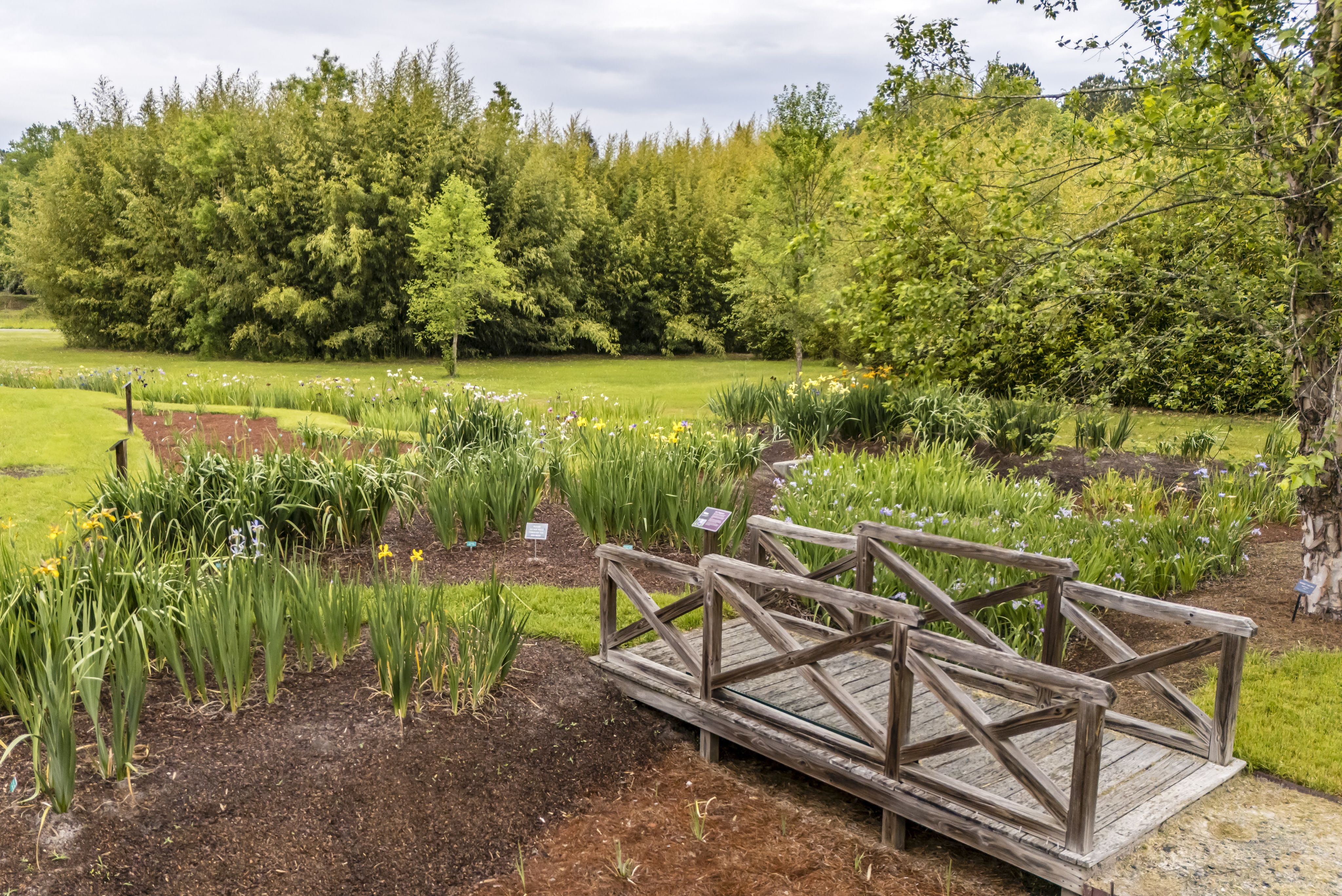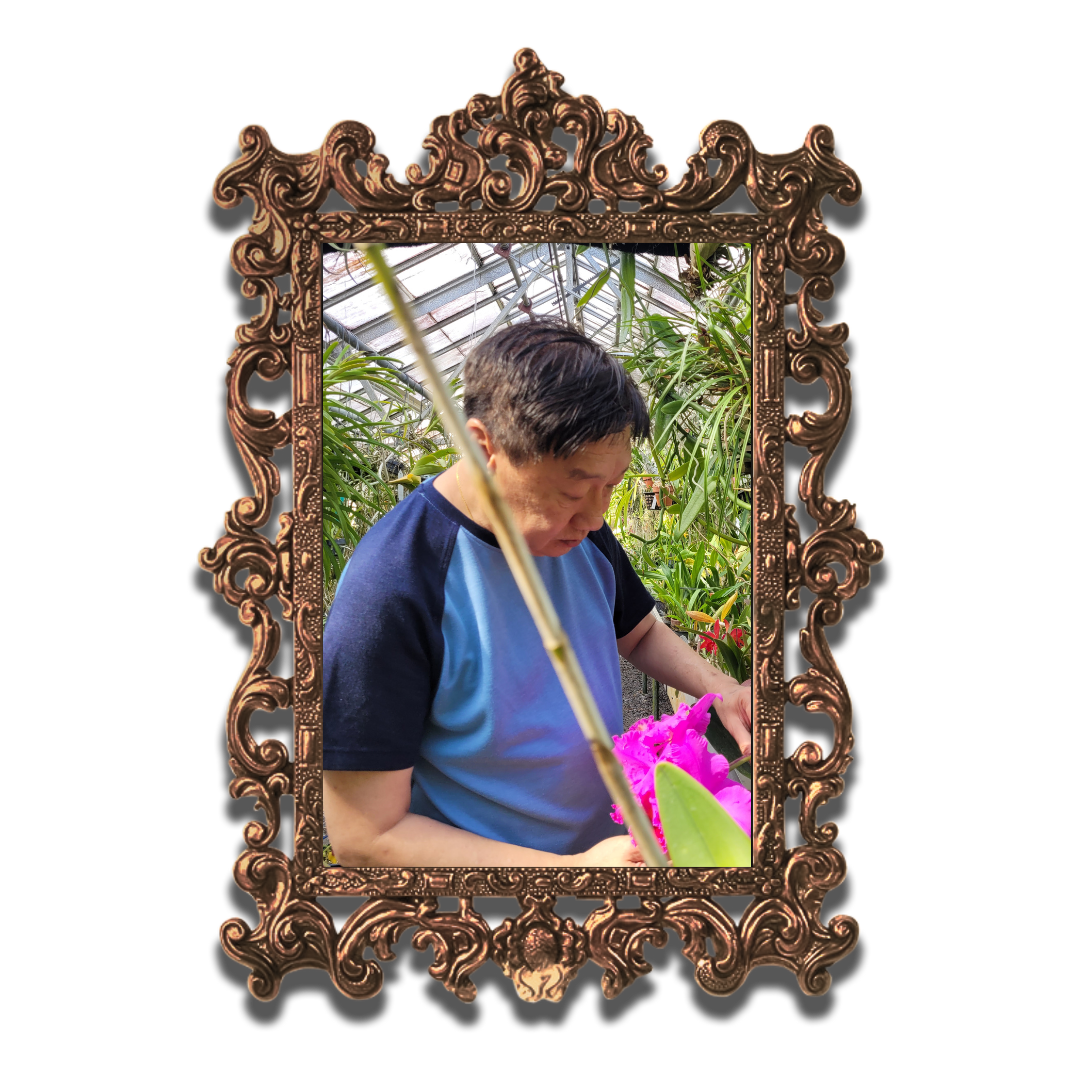Experts study mystery irises
at the Coastal Georgia Botanical Gardens
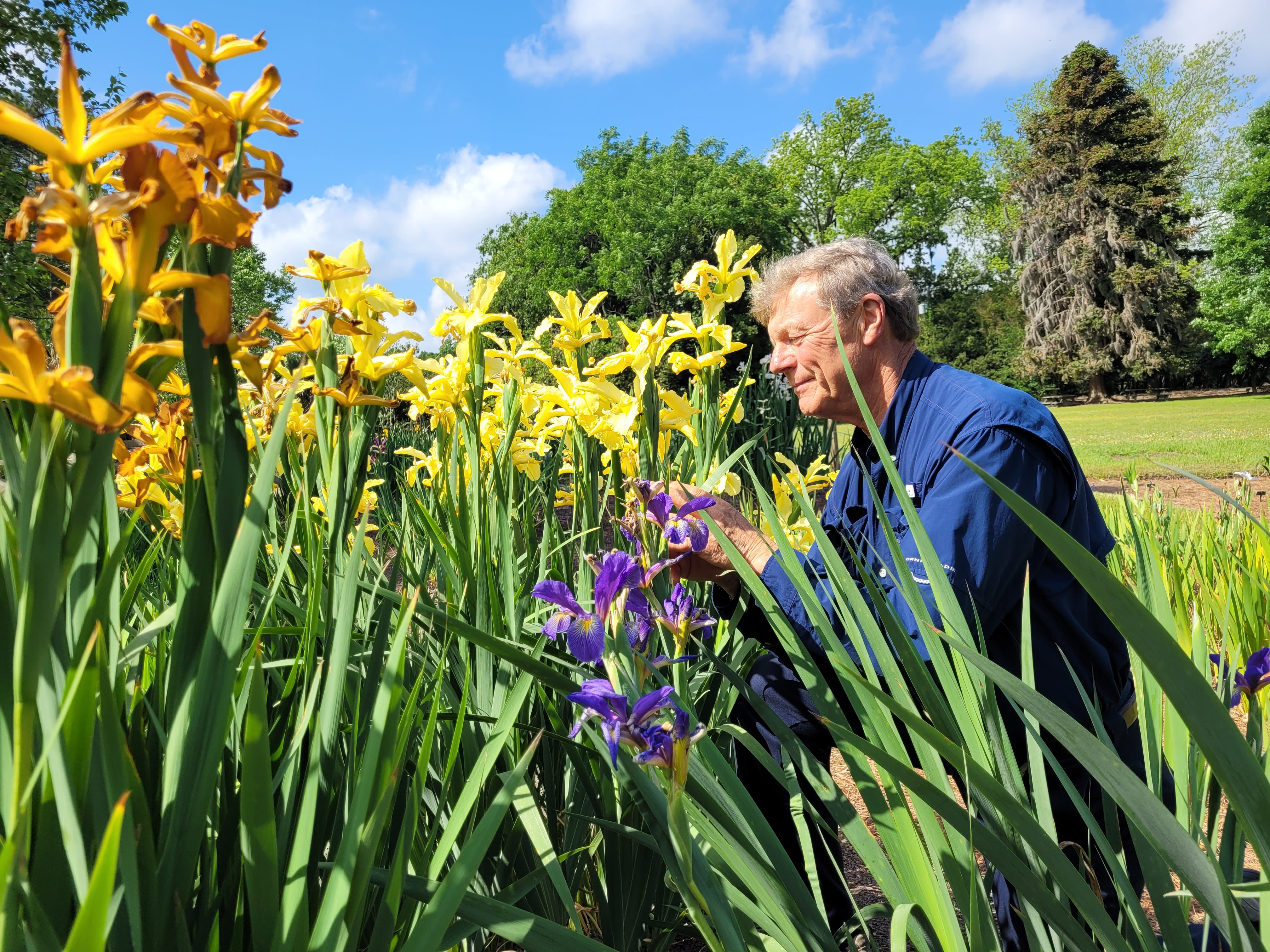
The Rivers of Iris exhibit at the Coastal Georgia Botanical Gardens (CGBG) is flourishing, with peak blooms projected for late April, but the technicolor petals aren’t the only things attracting attention.
Stan Gray, volunteer iris curator at CGBG, and Brian Shamblin, an associate research scientist with the University of Georgia’s Warnell School of Forestry and Natural Resources, are growing several mystery irises at the gardens that could prove to be one of two exceptionally rare iris species: Iris rivularis or a variant of Iris hexagona.
The mysterious discovery is already generating interest in the iris conservation space.
“I looked for three years and couldn’t find (Iris hexagona) anywhere in Georgia or South Carolina,” Shamblin said. “I joined one of the Georgia native plant Facebook groups just to keep my eyes peeled.”
Iris hexagona is rare throughout its range. Many of the native locations mentioned in the variety’s herbarium records were submerged when South Carolina created reservoirs such as Lake Moultrie and Lake Marion, lost along with South Carolina towns like Ferguson, Vienna and Countsville.
Iris rivularis is even more elusive. Described in 1927 by the curator of the New York Botanical Garden, botanists have since had difficulty locating the flower. Many think it is a type of Iris hexagona. However, recent research from the Florida Museum of Natural History has resurrected it as a species and suggested that it is endangered.
Now Shamblin and Gray may have a chance to research Iris rivularis at CGBG, a top Savannah attraction run by UGA’s College of Agricultural and Environmental Sciences and UGA Cooperative Extension.
Stan Gray, volunteer iris curator at the Coastal Georgia Botanical Gardens, is also an avid birder. His parents planted a beautiful iris bed which inspired his lifelong love of the flower.
Stan Gray, volunteer iris curator at the Coastal Georgia Botanical Gardens, is also an avid birder. His parents planted a beautiful iris bed which inspired his lifelong love of the flower.
Brian Shamblin, an associate research scientist at UGA, focuses on the application of genetic tools to inform species management and conservation.
Brian Shamblin, an associate research scientist at UGA, focuses on the application of genetic tools to inform species management and conservation.
Iris hexagona
Commissioned by John Small and Illustrated by Mary Eaton, 1924
Iris savannarum
Commissioned by John Small and Illustrated by Mary Eaton, 1924
Iris rivularis
Commissioned by John Small and Illustrated by Mary Eaton, 1927
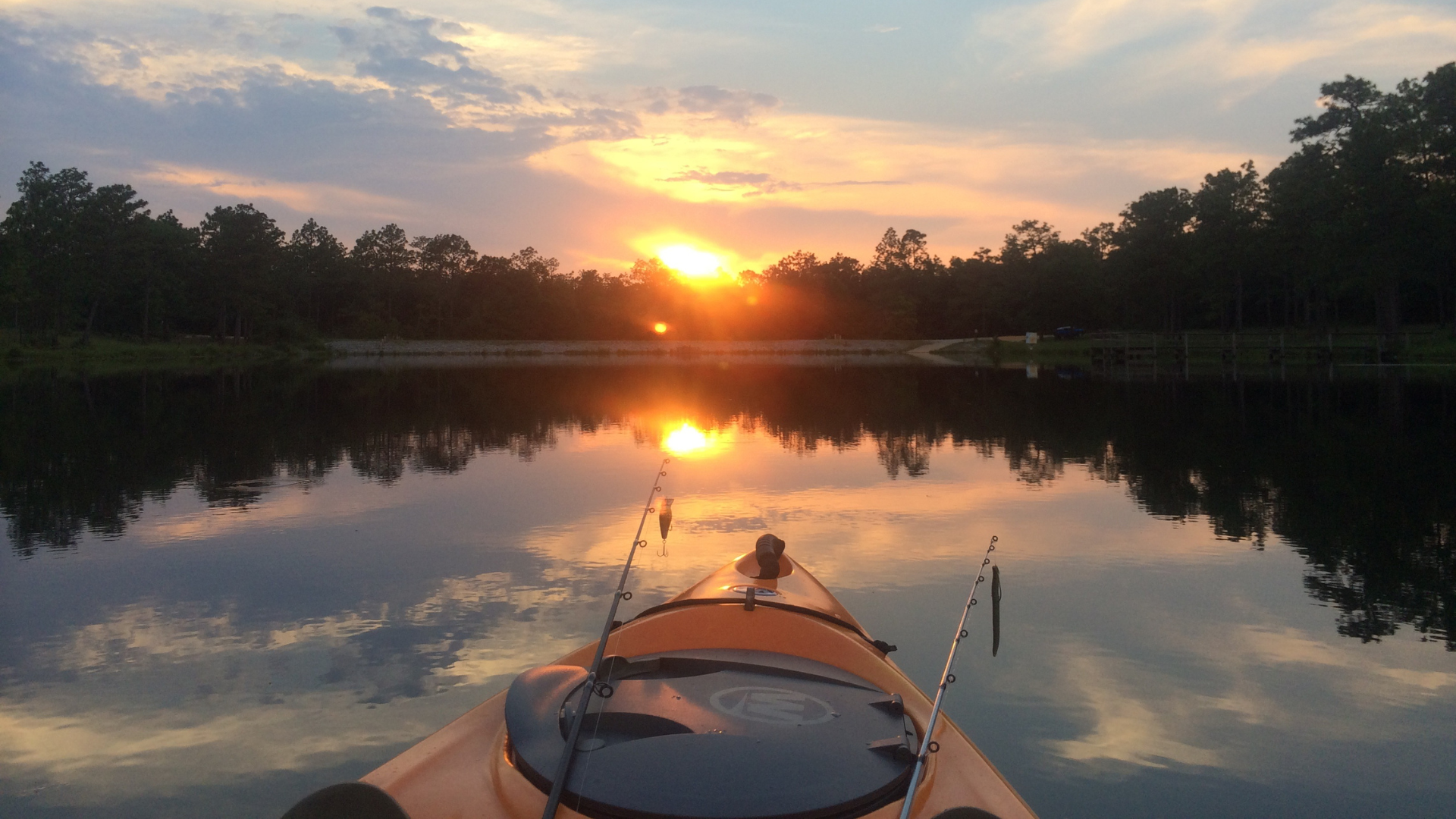
A fortuitous trip

Coastkeeper Maggie Van Cantfort was the first in decades to stumble upon the mystery iris. She was out on a kayaking trip when she spotted two irises that looked like different species.
Van Cantfort works for the Altamaha Riverkeeper, a grassroots organization dedicated to the preservation, defense and restoration of the Altamaha River and its tributaries. She manages conservation efforts for coastal portions of the river and often takes trips to observe the river and its ecosystem.
After pausing her kayaking trip to take some pictures, she posted them on Facebook looking for more information. Shamblin saw her post and was thrilled that she had found what appeared to be Iris hexagona.
Later that year, Shamblin worked with Van Cantfort and the Georgia Department of Natural Resources to collect seed pods from the irises. About 600 seeds from that collection have been planted, with around 150 seedlings sprouting and available for further study.
CGBG also acquired and planted unidentified irises from the Vic Lambou collection in 2021, some of which are also Iris hexagona. Lambou was a hobbyist plant collector in Florida, and several irises in his inventory were collected on the border of the described range of Iris hexagona, Iris savannarum and Iris kimballiae. These irises will provide additional insights into the distribution and characteristics of Iris hexagona.
Shamblin and Gray are currently documenting and recording observations about both groups of irises at CGBG. Next, they will start trying to classify them.

Conservation through identification

Gray compares iris illustrations in Fleur de Lis, the journal of the Society for Louisiana Irises, with the mystery irises at CGBG.
Gray compares iris illustrations in Fleur de Lis, the journal of the Society for Louisiana Irises, with the mystery irises at CGBG.
Shamblin is starting with basic genetic clustering methods that he hopes will provide enough data to identify the irises. Then he plans to map how the genetic diversity of the irises is distributed in the landscape.
Understanding the relationships between these plants is an important first step toward conservation efforts.
Luckily, Shamblin’s work at Warnell is focused on conservation genetics, so he was thrilled when his long-time iris hobby intersected with his research focus.
“I was a plant science major as an undergraduate student … but I’ve also kept animals since I was a kid,” Shamblin explained. “I was torn between which one I wanted to do for a career. I’ve been growing iris for 20 years — it’s been a hobby since high school. To find out that these are native to the Southeast, and that a lot of them maybe aren’t doing so great in the wild, it's just interesting to get involved with something that is native to our coastal ecosystems here in the South.”
The discovery could be crucial to local conservation efforts. If the rediscovered species is Iris hexagona or Iris rivularis, it could be a building block for increased protections for rivers and forests in Georgia, especially because only a portion of the patches that have been identified are on protected land.
“If we as humans have disrupted nature, I feel obligated to try to counteract that as much as we can,” said Shamblin.

A decade of iris research

The mystery iris is just one of many species growing at CGBG. Gray is cultivating it in the Rivers of Iris exhibit — a living laboratory designed to educate the public and showcase the types of irises that can thrive in the Savannah climate.
The collection has continued to grow since its launch in 2007 and, as of 2024, Gray has tested more than 700 bearded irises, 275 Louisiana irises, 155 Louisiana iris species variants and 150 spuria irises in the Rivers of Iris.
“It’s one of the biggest public collections of iris in the world,” said Gray. “This is probably the only place in the world where you can see spuria juxtaposed with Louisiana irises.”
Gray was selected as a National Steward for the Louisiana Iris Species Preservation Project to honor his dedication to preserving and promoting Louisiana irises.
Yellow, purple, orange and white irises blend together in the Rivers of Iris exhibit. (Photo by Howard Hackney)
Yellow, purple, orange and white irises blend together in the Rivers of Iris exhibit. (Photo by Howard Hackney)

The future of the Coastal Georgia Botanical Gardens

Gray hopes the iris excitement will help CGBG draw in new visitors.
“Most people don’t know we’re here,” said Gray. “It’s really a hidden gem.”
Gray has been trying to increase visibility for the gardens by giving formal presentations at local garden clubs, leading on-site tours and encouraging artists of various types to paint the Rivers of Iris exhibit during its April and May glory. He hopes CGBG will be able to host more events like a recent plein-air workshop organized by the Telfair Museum when 25 painters came to paint the irises.
Jaime Yu inspects plants in the orchid greenhouse.
Jaime Yu inspects plants in the orchid greenhouse.
The Rivers of Iris exhibit sprawls out behind an informational sign. (Photo by Howard Hackney)
The Rivers of Iris exhibit sprawls out behind an informational sign. (Photo by Howard Hackney)
A local artist paints orchids in the greenhouse for the 36th Annual Orchid Show.
A local artist paints orchids in the greenhouse for the 36th Annual Orchid Show.
Purple and orange irises lend contrast in the Rivers of Iris exhibit. (Photo by Howard Hackney)
Purple and orange irises lend contrast in the Rivers of Iris exhibit. (Photo by Howard Hackney)
Extension Educator Alana Edwards tends to the pollinator garden at CGBG.
Extension Educator Alana Edwards tends to the pollinator garden at CGBG.
A wooden bridge connects the Rivers of Iris exhibit. (Photo by Howard Hackney)
A wooden bridge connects the Rivers of Iris exhibit. (Photo by Howard Hackney)
In other bucolic nooks of the property, Alana Edwards and Jaime Yu are hard at work on future-proofing projects of their own.
Edwards, an Agriculture and Natural Resources (ANR) educator with UGA Extension, leads tours around the grounds, including through the Rivers of Iris exhibit. Along with a small group of Georgia Master Gardener Extension Volunteers, she also works in CGBG’s pollinator garden to support the state’s pollinator populations.
Edwards is training a group of Georgia Master Gardeners to help lead tours at CGBG and hopes to partner with Savannah College of Art and Design to attract foot traffic from students in botanical illustration classes.
Yu, a CGBG volunteer and member of the Deep South Orchid Society, visits the Orchid Greenhouse daily to maintain the tropical plants.
Yu has also been tapping into the Savannah art scene to attract visitors. CGBG hosted the 36th Annual Orchid Show in March this year, when Yu encouraged them to allow artists to enter the competition. Local painters flooded the Orchid Greenhouse, drawing orchids and winning numerous prizes.
CGBG volunteers feel a sense of pride and camaraderie in their work and their passion for the gardens is palpable.
“The biggest blessing of it all is that UGA allows us to use this land to do what we love,” said Gray. “All of us volunteers have our specialties and it's a privilege to have this space.”
Alana Edwards, an Agriculture and Natural Resources educator with UGA Extension, is passionate about plant breeding, invasive species management and urban horticulture.
Alana Edwards, an Agriculture and Natural Resources educator with UGA Extension, is passionate about plant breeding, invasive species management and urban horticulture.
Jaime Yu, Deep South Orchid Society member, has helped care for hundreds of orchids at CGBG.
Jaime Yu, Deep South Orchid Society member, has helped care for hundreds of orchids at CGBG.
Want to visit the Coastal Georgia Botanical Gardens?
The Coastal Georgia Botanical Gardens serves as a museum of plants, a tranquil escape, a living classroom and an impressive, historic venue for special events for more than 100,000 annual visitors. Plan your visit to see the iris exhibit and other gardens this spring. For more information about the gardens, call 912-921-5460.
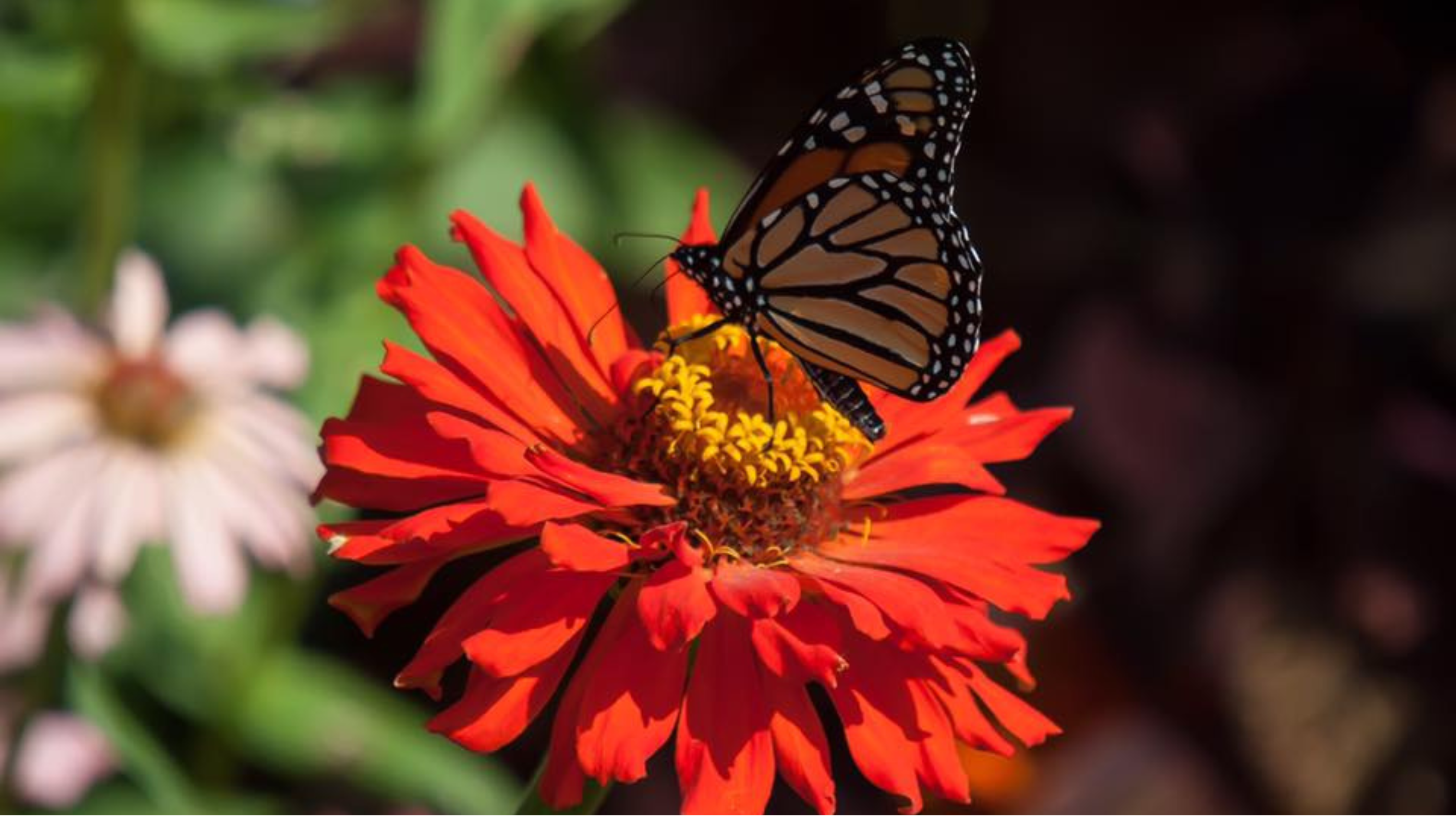
News media may republish this story. A text version and art are available for download.


